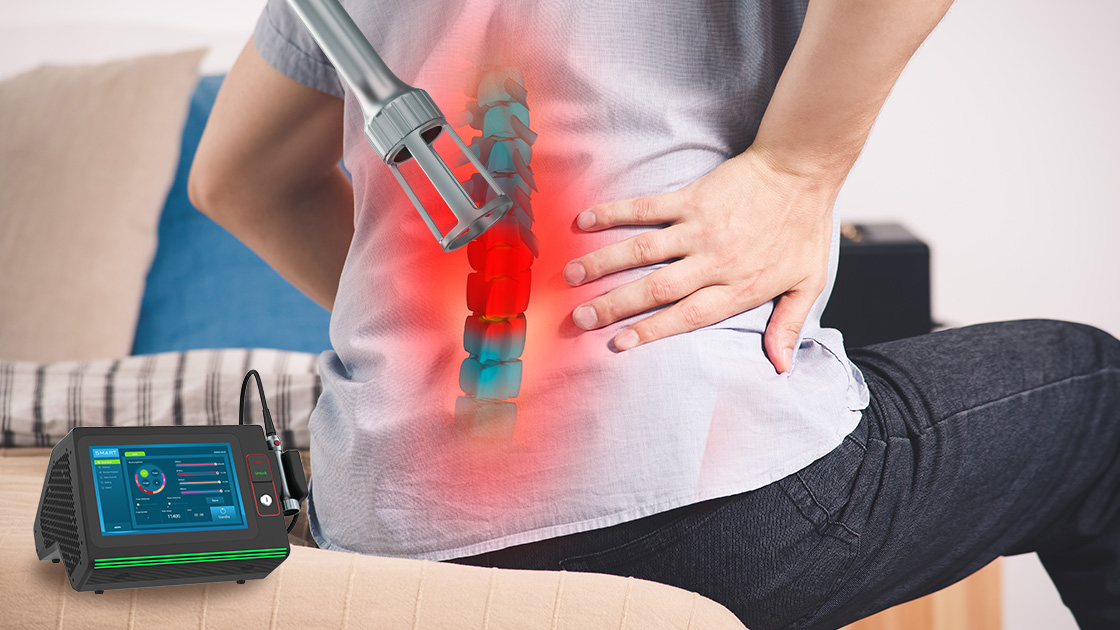Page Contents
Lumbar disc herniation refers to the displacement or protrusion of intervertebral discs in the lower back, causing symptoms like lower back pain, sciatica, and weakness. While conservative treatments like physical therapy and medication are common, class 4 laser therapy has emerged as a promising treatment option. Class 4 laser therapy involves the use of higher-powered laser energy to target and shrink the herniated disc material, relieving pressure on the nerves. It is a non-invasive procedure with advantages such as precise targeting, reduced risks, and potential for tissue healing. Class 4 laser therapy offers an alternative for patients seeking effective and less invasive options for lumbar disc herniation.
Treatment Process of Laser Therapy for Lumbar Disc Herniation
I. Patient Evaluation and Selection
A. Thorough assessment of the patient’s medical history and symptoms
B. Physical examination and neurological evaluation to determine the extent of disc herniation
C. Identify the precise location of the herniation
D. Evaluation of the patient’s overall health and suitability for laser therapy
II. Procedure Description
A. Pre-operative preparations, wear goggles to protect eyes.
B. Precise delivery of laser energy to the targeted disc material
C. Monitoring of the patient’s comfort and response during the procedure
III. Post-operative Care
A. Monitoring the patient in a recovery area to ensure stability and comfort
B. Instructions for post-operative care, including activity restrictions
C. Follow-up appointments to assess the patient’s progress and adjust the treatment plan if needed
D. Regular communication between the patient and healthcare provider to address any concerns or complications that may arise
Effectiveness and Safety of Laser Therapy for Lumbar Disc Herniation
Laser therapy has gained attention as a potential treatment for lumbar disc herniation. Many clinical studies have investigated its effectiveness and safety as well as its advantages compared to traditional treatment methods.
Clinical studies have shown that Class 4 laser therapy can deliver superior outcomes for patients with lumbar disc herniation. Class IV Laser therapy has been found to effectively reduce the size of herniated disc material, relieving pressure on the spinal nerves. Patients have reported reduced disability, decreased reliance on pain medication, and improved quality of life.
Class IV laser therapy for lumbar disc herniation is considered a non-invasive procedure, resulting in fewer risks and complications compared to traditional open surgery. Research has demonstrated a low incidence of adverse events associated with laser therapy, such as infection or nerve damage. In a word, it has been clinically proven to be a safe modality.
Comparison with Traditional Treatment
Class IV laser therapy is a great alternative to open surgery, avoiding the need for large incisions and extensive tissue disruption.
Compared to traditional surgical approaches, Class IV laser therapy is associated with reduced post-operative pain, shorter recovery time, and lower risk of complications.
Traditional treatments like medication, physical therapy, or epidural injections may provide temporary relief but may not address the underlying cause of disc herniation as effectively as laser therapy.
Smart Ice Laser Therapy System
The Smart Ice Laser Therapy System developed by Rhein Laser is the best treatment option for lumbar disc herniation. It offers advantages such as pain relief, improved functional outcomes, and a reduced risk of complications compared to traditional treatment approaches. Besides, it can achieve 20% faster treatment times with 60W peak power output. And the digital thermal imaging helps to visualize the therapeutic effects in real-time. It has become the standard configuration for high-end clinics. Deliver maximum results with Smart physiotherapy systems, one-stop solution for pain patients.
